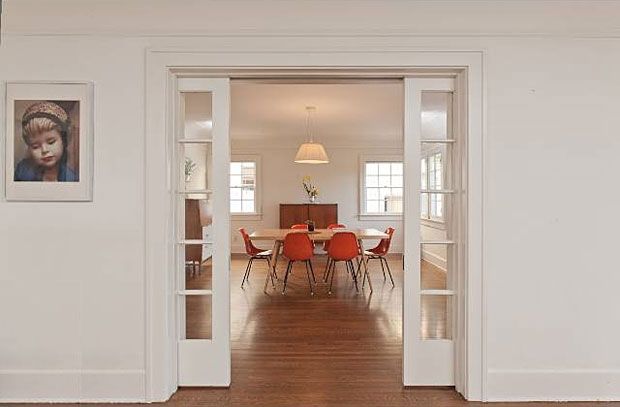
Introduction
In the realm of interior design, the spatial layout of a home plays a pivotal role in shaping its ambiance and functionality. The delineation between living spaces holds significant importance, serving both practical and aesthetic purposes. One key architectural feature that can enhance the transition between these areas is the installation of doors between the living room and dining room.
Types of Doors for Living Room and Dining Room
When considering the installation of doors between the living room and dining room, homeowners are presented with a variety of options, each with its own unique characteristics and advantages. French doors, renowned for their elegance and versatility, offer a seamless transition between spaces while allowing an influx of natural light and picturesque views. Sliding doors, on the other hand, serve as a space-saving solution, exuding contemporary charm and ensuring ease of accessibility. Pocket doors, with their discreet design, maximize floor space and provide a seamless integration between rooms.
French Doors
French doors are characterized by their elegance and versatility. They provide a classic touch to any home and offer a seamless transition between the living room and dining room. French doors typically consist of two panels with glass inserts, allowing natural light to flow between spaces. For more information.
Sliding Doors
Sliding doors are a popular choice for modern homes. They offer a sleek and space-saving solution for dividing the living room and dining room. Sliding doors glide effortlessly along a track, making them easy to operate and ideal for smaller spaces. To learn more about sliding doors..
Pocket Doors
Pocket doors are a practical choice for homeowners looking to maximize space. These doors slide into a wall cavity when opened, allowing for seamless integration between the living room and dining room. Pocket doors are discreet and can help create a clean and streamlined look in any home. For additional information on pocket doors.
Design Considerations and Aesthetic Integration
The aesthetic integration of doors between the living room and dining room requires careful consideration of various design elements. Material selection is key, with options ranging from wood for a traditional look to glass for a modern appeal. Hardware, such as door handles and hinges, should complement the overall design scheme. Additionally, coordination with the interior design style ensures a cohesive and harmonious look throughout the home.
Practical Benefits of Doors Between Living Room and Dining Room
Beyond their aesthetic appeal, doors between the living room and dining room offer practical benefits that enhance the livability of the space. They provide privacy and acoustic control, regulate energy efficiency, contribute to home security, and facilitate entertaining and hosting.
Installation and Maintenance Tips
Proper installation and maintenance are essential for ensuring the functionality and longevity of doors between the living room and dining room. Whether opting for professional installation or a DIY approach, meticulous attention to detail is required. Regular maintenance practices, such as cleaning and lubricating, help preserve the doors’ performance over time.
FAQs (Frequently Asked Questions)
- Can I install doors between my living room and dining room myself?
- While DIY installation is possible, it’s recommended to consult a professional to ensure proper alignment and structural integrity.
- How do I choose the right type of door for my space?
- Consider factors such as space constraints, design preferences, and practical requirements when selecting the type of door for your living room and dining room.
- What are some common materials used for interior doors?
- Common materials for interior doors include wood, glass, and metal, each offering its own unique aesthetic and functional properties.
- Are there any alternatives to traditional doors for dividing living spaces?
- Yes, alternatives such as room dividers, curtains, and open shelving can also be used to delineate living spaces while adding a decorative element to the home.
In conclusion, the installation of doors between the living room and dining room is a design decision that can significantly enhance the functionality and aesthetic appeal of a home. By carefully considering various options and design elements, homeowners can create a seamless transition between these spaces while maximizing both form and function.




